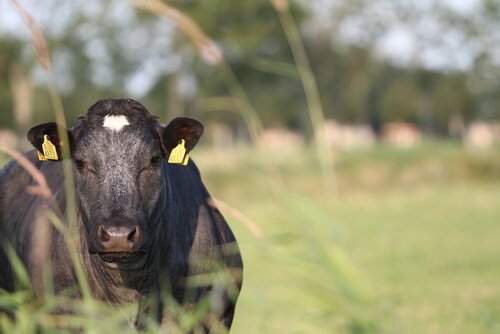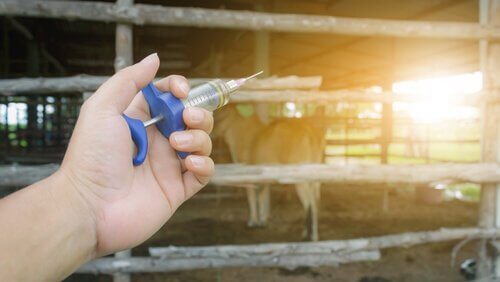Application of Antiparasitics on Cattle

On the farm, it’s very important to take good care of the livestock so that it remains healthy and strong, and so it can produce the amount of food expected of it. For this reason, the application of antiparasitics on cattle is fundamental. Find out which are the most common parasiticides available these days.
Parasitic diseases that afflict cattle
There are two large groups of parasitic diseases:
External or ectoparasites
Among these, we have the diseases transmitted by hematophagous insects or bloodsuckers, such as the tsetse fly, the black, stable or horned flies, fleas, lice, horse flies, and mosquitoes. Myiasis, a parasitic infestation, transmitted by fly larvae or maggots, is one of the most feared in farms as it infects the skin, mucous membranes and wounds once the flies lay eggs there and the larvae reproduce.
Internal or endoparasites
Flatworms or trematodes and ribbon worms or cestodes are other types of internal parasites that can affect cows, oxen, buffalo or bison. On this note, the effects of internal parasites on cattle will vary with the severity of infection as well as age and stress level of the animal.
Furthermore, some nematodes affect the lungs, skin, eyes and other organs of the animal.
Ticks and scabies are also organisms to worry about.
Antiparasitics on cattle : external application

There are several ways to apply antiparasitics on cattle topically or externally. Here we highlight the following:
1. Sprays
The purpose of these is mainly to treat lice, ticks, horn flies, and human botfly. Moreover, their purpose is to cure or prevent the rise of fly larvae or maggots, as well as to avoid the proliferation of insects in wounds or after surgery. Sprays are easy to apply and don’t cause stress in the animals.
2. Baths
These work either by immersion or by sprinkling. The first one consists of immersing the cattle in large pools with a mix of water and an antiparasitic. The main disadvantage of this system is the stress it generates in animals.
It may not only poison some of the animals if they drink the water, but it also may lead to blows and fractures between them as they bump into each other while trying to avoid the bath.
A sprinkler bath requires a special system where water is mixed with the antiparasitic, which then vaporizes above the cattle. The disadvantage of this application is that it only reaches the back of the cows and doesn’t reach their lower areas.
3. Earrings
In addition to serving as identification, plastic earrings are used as a method of application of antiparasitics on cattle – mainly as mosquito or horn fly repellents. The active ingredient lasts approximately 90 days.
4. Powders and scratchers
Another system of application of antiparasitics is through bags that store bactericidal powders and that are placed in the outlet of the cylinder sleeve. In this manner, when a bovine leaves the barn, then it also makes contact with the container which releases the treatment at that moment.
Antiparasitics on cattle : internal application

Antiparasitics can also be used internally as a measure of prevention against a possible outbreak. This method is for treating infected animals individually. For this purpose, they’re separated from the rest of the cattle.
The methods for internal applications are:
1. Capsules or intraruminal boluses
Intraruminal boluses are drug delivery devices that treat parasites for a long time as the active ingredient releases slowly.
The capsules are fed to the animals and allowed to act on their own.
2. Intraruminal fluids
Here, a needle goes through the skin and subsequently, the peritoneum and the rumen. Once it gets there, the antiparasitic is injected. Because this is very bloody, it’s no longer a method for animals weighing less than 440 pounds.
Additionally, there are now some replacements that are injectable and, because of this, allow greater control over parasites in bovines.
3. Premixes or blocks
This type of medication goes directly in the feed and each animal receives at least one dose. The problem with this technique is that it’s hard to know how much antiparasitic each specimen actually consumed.
Finally, you may like to know that the application of antiparasitics on cattle is strictly controlled by specialized veterinarians and that they give very specific instructions on their use.
All cited sources were thoroughly reviewed by our team to ensure their quality, reliability, currency, and validity. The bibliography of this article was considered reliable and of academic or scientific accuracy.
Dirección de Producción y Sanidad Animal de la FAO. (2003). Resistencia a los antiparasitarios, Estado actual con énfasis en América Latina. FAO. https://doi.org/10.1007/s10800-011-0320-1